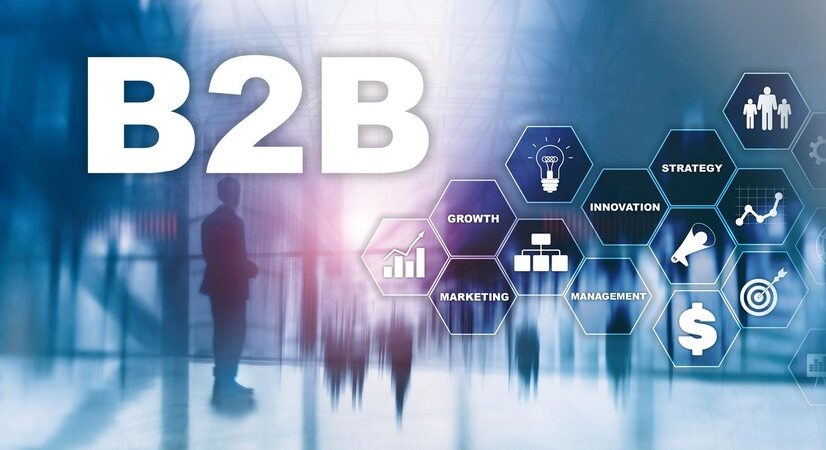Why Companies Are Relying on HR Agencies for Executive Search
Barsha Bhattacharya, 4 days ago

Barsha Bhattacharya, 5 days ago

Barsha Bhattacharya, 5 days ago

Barsha Bhattacharya, 2 weeks ago


When it comes to your B2B Commerce business, it’s crucial that you’ve got a digital strategy in place. Just like buildings need frameworks, a digital strategy is a framework for the digital ecosystem within your business.
With your digital strategy, it’s important that you focus on the larger business objectives along with their impact on your organization to help with defining the overarching vision.
Once you’ve got that figured out, you can then break up these objectives into smaller, more tangible goals and measurable strategies to ensure that your technology decisions are executed and aligned with your digital strategy.
This is 2022. For every type of business, whether it is B2B or B2C, you will get maximum advantages with the digital trends. Do you know what digital B2B commerce can bring to your business? Here are some of the advantages of having B2B commerce.
So you can see if you want to stay in this competitive market, the digital strategy is the only solution. Digital strategy is not only increasing the profit-making potential. You can actually store the data and then use these data in your business.
Below are some other steps you should take pertaining to your B2B commerce digital strategy.

The technical experts within your team should be designing a digital ecosystem that both meets and exceeds objectives. Your technology stack should include the best-integrated B2B commerce digital strategy solutions such as:
The key to ensuring that you’re reaping the most value with your technology stack is data integration. When your data is integrated, it’ll be able to support your ecommerce processes and ensure that you’re exceeding objectives.
Data is vital for B2B Commerce, so it’s important that you take this digital strategy into consideration. For every business, consumer records are assets, so you may even choose to buy b2b data. However, consumer records are not possible to keep track of with pen and paper. Instead, digital trends are keeping all the records of the consumers.
Some data that you should be reviewing include:
By monitoring analytics and reviewing your data, you’ll be able to make better business decisions, such as improving user experience, customer conversion, and increasing overall customer loyalty.

Merchandising is also a vital part of a B2B commerce digital strategy, and this includes:
When it comes to merchandising, by personalizing it for users on your website, you’ll be able to increase both the overall customer experience as well as customer loyalty. This includes AI-powered recommendations which closely follow the customer’s buying journey.
Some of the best B2B website experiences not only help customers navigate a wide variety of choices but also assist them with saving time. With a plethora of websites available on the web, it’s imperative that you’re doing what you can to retain customers and ensure that they have a seamless user experience.
For any b2b commerce salesforce website, health is very important. And without using SEO, this quality achieving is almost impossible. Many entrepreneurs think SEO is only required for content publishing for blog and social media content. But this is also very important for every type of business website.
Search engines always give the maximum preferences to the e-commerce site. Organic ranking improvement is the only solution for that. You can improve the organic ranking with search engine optimizations and SEO marketing strategies.
Content keyword maintenance is very important. Along with that, you have to optimize each of the online product description contents.
Here are some of the tips for improving the Technical SEO parts:
Social media platforms are another great solutions for boosting B2B Commerce and communications. Every day social media user numbers are increasing. And this is a clear indication for every purpose, social media platforms are always the most effective.
Usually, when the brands are using social media platforms and their own business pages, they are actually build-up the trust level. You will get easy access to your customer’s needs, and you can do the branding with the logos and the projects.
You can ask your customers to leave their positive views of the brands. These comments will go to work as social proof of your brand names. You can feature the influencers, and it will go to figure out the product types and turn your business into a creditable business.
As seen above, crafting a digital strategy is vital to the success of your B2B commerce business. Before you go ahead and execute your digital strategy, make sure that you’re spending ample time planning.
Take time to review your digital strategy’s objectives before reviewing your tech stack, managing your data and analytics, and taking a look at your website’s merchandising. Once you’ve reviewed everything, it’ll be much easier to implement a digital strategy that will lead to long-term success. What types of digital strategy you are following? Do not forget to share your opinion through the comment sections, and let us know if we are missing out on any of the points.
Read Also:
Arnab Dey is a passionate blogger who loves to write on different niches like technologies, dating, finance, fashion, travel, and much more.